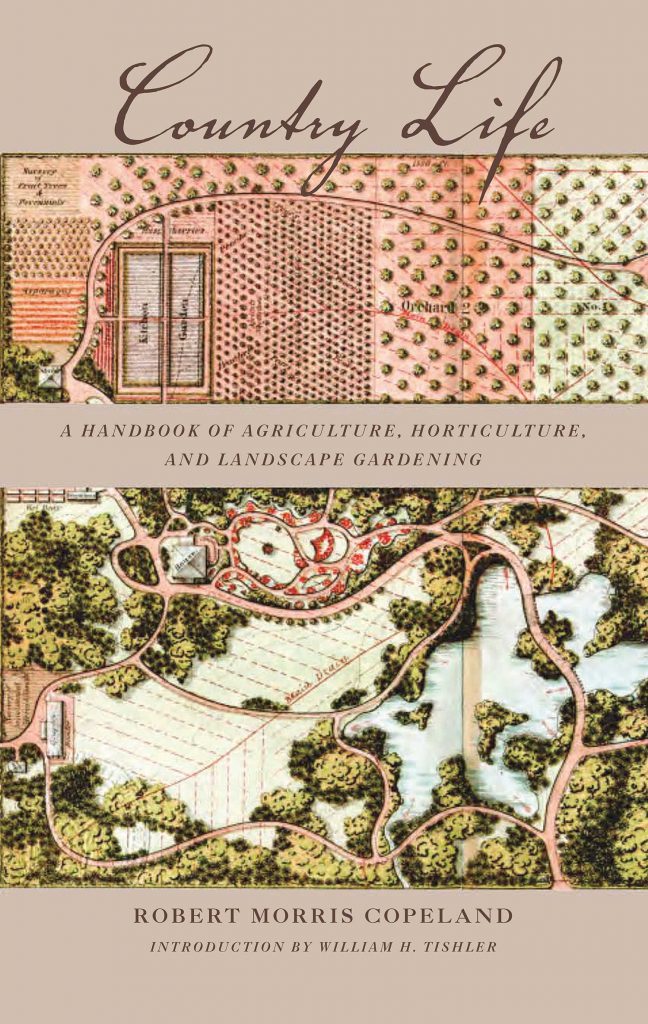Country Life
A Handbook of Agriculture, Horticulture, and Landscape Gardening
Robert Morris Copeland
Reprint of the 1859 edition, with a new introduction by William H. Tishler
Library of American Landscape History
| ISBN: 978-1-952620-15-7 | 1000 pages | 5.5 x 8.5 inches |
| $50.00 | Cloth | Published: 04/14/2009 |
| 194 b&w photos and line drawings/woodcuts | |
A volume in the ASLA Centennial Reprint Series
In 1859, Robert Morris Copeland published Country Life, which quickly became a bible of scientific farming and landscape gardening, as it incorporated the latest agricultural practices with new engineering methods. Handsomely illustrated with plates and woodcuts, the book sold through six editions. Copeland organized the book into an agricultural year that provided practical and aesthetic advice on a month-by-month basis, according to area. He dedicated the book “to all lovers of nature and to all engaged in cultivating and adorning the earth,” suggesting that a well-managed farm “can expand the mind and ennoble the soul.”
A new introduction by William H. Tishler analyzes the importance of the book to mid-nineteenth-century America and chronicles Copeland’s other important achievements, including his early concept for a metropolitan park system for Boston that foreshadowed Charles Eliot’s efforts by many years.
About the Authors
Robert Morris Copeland
Robert Morris Copeland (1830–1874) was one of a small number of American landscape practitioners whose written and built work helped establish the foundations for city planning and integrated park systems. As did his colleagues Frederick Law Olmsted and H. W. S. Cleveland, Copeland merged many of the principles of scientific farming with landscape gardening. In his short career, he created important designs for cemeteries, estates, suburbs, communities, and parks throughout New England, New York, and Pennsylvania.
William H. Tishler
William H. Tishler, FASLA, is editor of Midwestern Landscape Architecture and author of the introduction to the LALH reprint edition of Country Life by Robert Morris Copeland. He is professor emeritus of landscape architecture at the University of Wisconsin–Madison and editor of American Landscape Architecture: Designers and Places.
